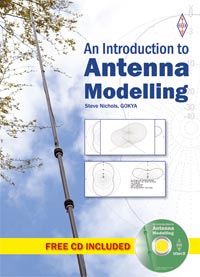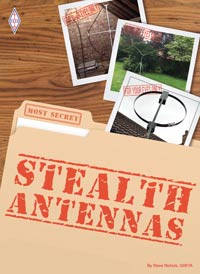
In the next round of tests I used the same 9:1 Un-Un wound using PVC covered cable and a T200-2 toroid. Note in the photograph that the PVC tape is only used to keep the turns neatly arranged.
If you want to build your own follow these instructions:
Building a 9:1 unun
Note: you could also use a T130-2 toroid, but that will be limited to a maximum of about 75-100W.
This time I erected a 10m high fishing pole and attached a 65ft quarter wave antenna for 80m in an inverted L fashion. That is, 10m up and then 9.8m out to the nearby summerhouse.
This was arranged away from the house and fed with 12m of RG8 coax, a single earth stake and two 20ft radials at the feed point..
Here are the SWR readings at the end of the coax:
3.5MHz – SWR 3:1
3.65MHz – SWR 4.2
3.8MHz – SWR 5.9
7.10MHz - SWR 13.6:1
10.1MHz – SWR 2.5:1
14.2MHz – SWR 3.3:1
18.14MHz – SWR 1.8:1
21.2MHz – SWR 2.4:1
24.9MHz – SWR 1.9:1
28.5MHz – SWR 1.2:1
From this you can see that by shortening the wire to 65ft from the original 85ft you gain 80m, but lose 40m. The rig (FT2000) would quite happily tune seven bands with its internal ATU.
Here are the quick comparison results against my 80m Windom and parallel-fed dipoles in the loft for 40m, 20m, 17, and 10m.
80m
Not as good around the UK as the Windom - probably due to the maximum current being in the vertical section. Modelling shows the antenna to be down about 10dB on a low dipole.
30m
Lithuania similar. Other EU and Italy similar. Bulgaria down 2 S points
17m
Similar – inverted L has slight edge at times. Slightly noisier
15m
Better than Windom by about 1 S point.
10m
Much better than Windom, dipole and mag loop around Europe via Es, by about 2 S points. Slightly more noise (+ 1 S point).
From this I can see that I need to do more tests, especially on 20m, but for an all-in cost for the antenna of about £15-£20 it shows promise. If you have a tree then the up and out idea with a 65ft wire looks quite good. A way to get 40m back would be to put a 40m trap in the wire at the 10m mark.
If you don’t fancy making your own UnUn you can buy the whole antenna from the Snowdonia Radio Company for £35 inc P&P – see http://www.snowdonia-radio-company.co.uk/srcproducts.html









